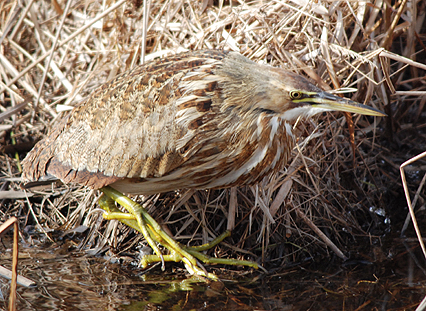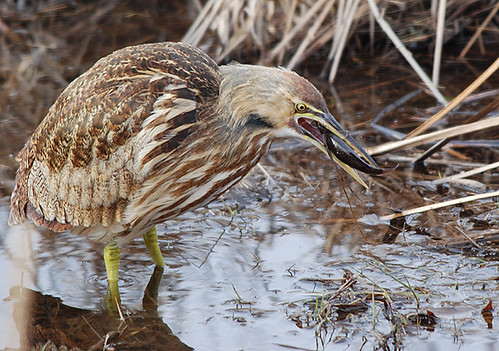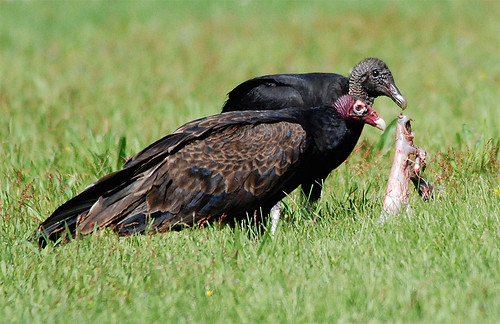American Bittern
Botaurus lentiginosus

The American Bittern is a wading bird, closely related to the much more conspicuous herons and egrets we’re all familiar with. While relatively common in New Jersey’s marshes and wetlands, the American Bittern is rarely seen. The solitary birds almost always stay hidden in dense vegetation, perhaps coming to the edge of the water to hunt. Like other herons, bitterns will eat fish, amphibians, snakes, crustaceans, small mammals, and just about anything else they can find that is edible.
These birds are some of the most remarkably camouflaged vertebrates you will find in the state. Their streaked breast pattern gives the appearance of reeds, and when the bittern remains motionless it is almost impossible to spot them. When they fear a predator is nearby they will raise their bills into the air, exposing their cryptic pattern and hopefully blending in with their surroundings. Incredibly, they have also been observed swaying back and forth when the wind is blowing the reeds around them.

The closest relative to the American Bittern in New Jersey is the Least Bittern, however this bird belongs to a different genus and the American Bittern actually has closer relatives belonging to Botaurus in other parts of the world. Scientists can actually create a phylogeny of the bitterns using information from sound recordings of their distinctive calls. These phylogenies match up with genetic phylogenies perfectly.
The American Bittern is truly one of New Jersey’s most spectacular animals. Their incredible camouflage and thunderous, booming call are unmatched. If you’re lucky enough to see one, watch from a distance and be patient. Watching them hunt, sway with the breeze, and call is worth the wait.




